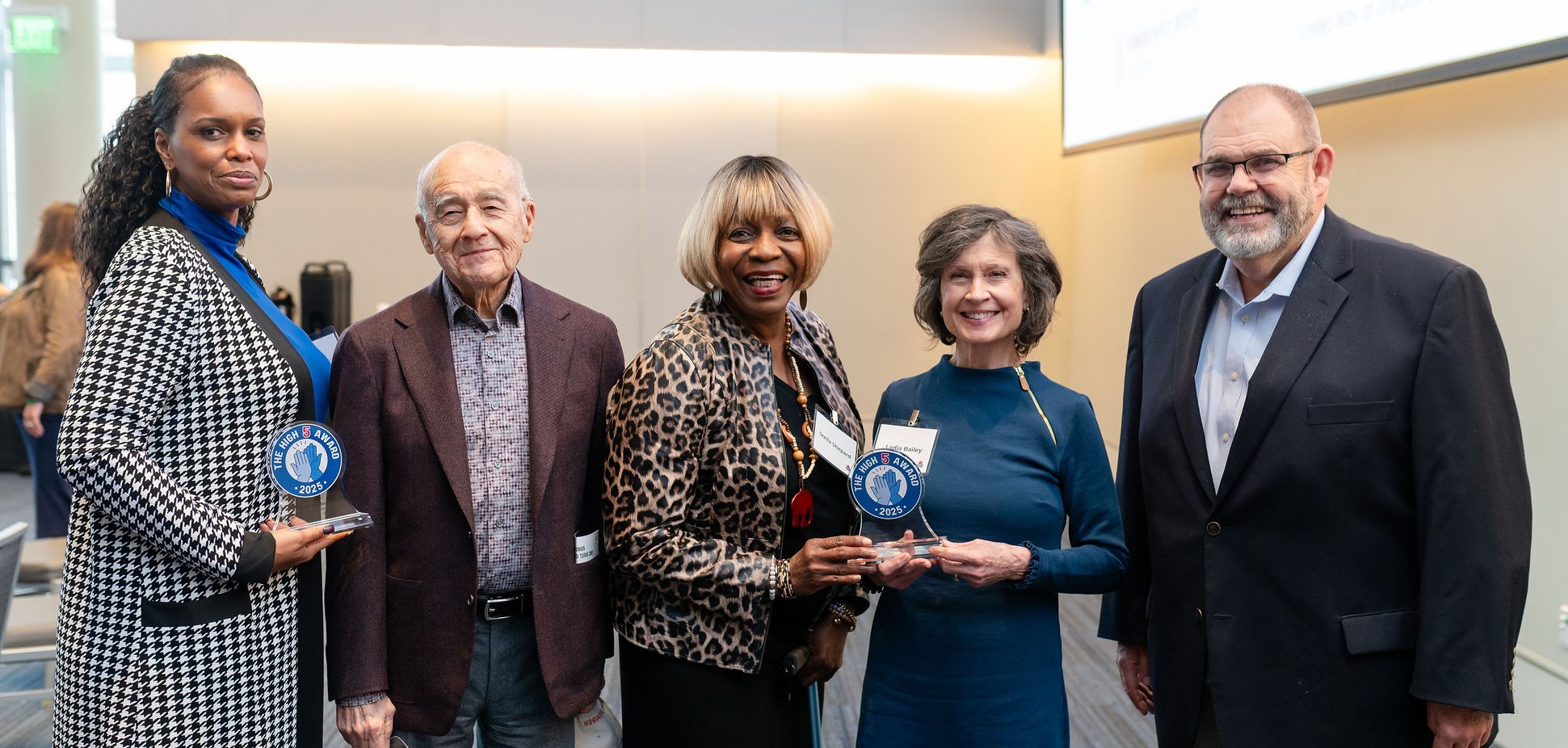In May, 2022, Mayor Justin Bibb unveiled his priorities and process for maximizing the use of American Rescue Plan Act (ARPA) funds through what he dubbed “Mayor Bibb’s Rescue & Transformation Plan.” As part of my work leading the Greater Cleveland American Rescue Plan Coalition, I wanted to dive more deeply into what the process will look like for the City of Cleveland as they plan for economic recovery. I sat down for an interview with Chief Bradford Davy who shared some additional background and insights on the Mayor’s Center for Economic Recovery, which we hope will be helpful information for community members seeking more clarity on the process.
I wanted to dive more deeply into what the process will look like for the City of Cleveland as they plan for economic recovery.
Meanwhile, on June 27, Council President Blaine Griffin shared his priorities for a significant portion of the ARPA funds ($53 Million from the first tranche of funding the City received) at a City Council Caucus meeting. We will share an update in an upcoming piece about that Caucus meeting and Council’s priorities. The coming months will provide many opportunities for City Council and the Mayor’s administration to find areas of alignment and prioritize their spending.
My interview with Chief Davy follows, and is edited for brevity. Questions are in bold.
Can you tell me about how the administration arrived at the priorities outlined on your website?
Chief Davy: In some ways, those priorities are a continuation of so many of the things that Mayor Bibb talked about on the campaign trail. The mayor was coming off of a deep and thoughtful listening tour that was predicated on door knocks, town halls, community conversations, the early days on zoom. A lot of these priorities were not ours to create but were really created by residents we heard from on the campaign. They are really a reflection of 4 main things:
- What we heard on the campaign and during the transition
- What the mayor said he was going to do on the campaign trail
- The commitments and priorities we heard from City Council
- Intractable, vexing challenges that have been staring down our city for too long that we wouldn't be able to address without the use of this capital.
Can you share more about how the evaluation criteria were developed, and how the guide will be used?
Chief Davy: The process of developing the evaluation guide really started by doing a national scan of the landscape- we wanted to know, what is the best practice for evaluating social impact? Some of this stems from my work at The Fund for Our Economic Future doing social impact scoring related to the Opportunity Zones. The team at Brookings selected Cleveland for their Transforming Cities Lab project. Part of their thinking was about weighting and setting priorities. The guide was also born out of a recognition that while the money was a lot, the need would always be greater than the amount of capital available to solve the problem. Given that, we have to be able to step away from our own biases. There needed to be formal logic placed on how a small group of individuals with an impossible task would approach funding true needs, all of which are valid and real and personal. The volume of proposals we saw and the various forms in which they came, and we weren't alone- the previous administration had also felt the avalanche of ideas. It was clear there would have to be some lens to make evaluation a bit easier, and more honest, and more fair.
Who is a part of the Center for Economic Recovery (have other folks been added that aren't listed on the website?) Can you share more about what they're working on now, and how you envision the decision-making process to go?
Chief Davy: Staffing the center is a select group of the mayor's leadership: myself (Bradford Davy, Chief Strategy Officer), Ahmed Abonamah (Chief Financial Officer), Sarah Johnson (Chief Communications Officer), Austin Davis (Senior Government Affairs Strategist), Abby Poeske (Mayor's Office), Leta Marie Wills (Commissioner, Health Equity and Social Justice), Delante Spencer (Chief Ethics Officer), Ryan Puente (Chief of Government Affairs).
In regards to the process, I think it's important to talk about where we are now and where we're going. We announced our priorities, put our website together and now it's up. After establishing those priorities, we assigned leads and co-leads from the administration to each priority area. For example, "Modernizing City Hall." Our leads there are Bonnie Teeuwun (Chief Operating Officer) and Roy Fernando (Chief Innovation and Technology Officer). They are being asked to shape their priority area; they have an idea and mandate from the mayor on what the priority is and we're asking them to get more clear. What does modernizing city hall mean? What are the spending buckets? What are the metrics for success? What are the overarching goals? And then what we'll ask them to do is break down how much of that capital they'll need in those spending areas, and then we'll ask them to cull a list of initiatives they want to fund. Some initiatives will be self-generated and internal, while others might be working with other partners in this space to develop specific initiatives that may need to be funded. For instance, broadband. Our conversations on broadband didn't just start and we know there are a lot of partners working on broadband. Do we need a call for proposals? Maybe, but maybe there's a way for us to work with leaders, institutions, nonprofits, residents on shaping something that is already being worked on.
Some initiatives will be self-generated and internal, while others might be working with other partners in this space to develop specific initiatives that may need to be funded.
So, if someone from the community, be they with an organization, or just a resident in the community, has a brilliant idea about how to address one of your priorities, should they reach out to someone about it if they haven't already?
Chief Davy: Yes. Right now, we don't have a plan to call for proposals. There was an open call during the last administration- there was a portal where people could drop their ideas, comments, and thoughts. We are an incredibly accessible administration and always encourage residents to reach out, ARPA or otherwise with comments or ideas. The mayor plans on doing some outreach; he has already spent some time at ward meetings, and he'll continue to schedule ward meetings where this can be a topic. We anticipate launching a monthly newsletter where we update from the Center for Economic Recovery what's been going on and how it's been working, so that's another place to engage, comment, and respond. We're also leaving it up to co-leads to think about how they may want to engage with individuals. In the Community Development side, for instance, participatory budgeting, what we're calling the Civic Participation Fund, that's the most heightened form of resident engagement, and we don't exactly know how that process will look yet, but we want to lean on City Council to help us think through that. Every priority will be a little different.
Are there ways that subject matter experts and advocates can support this work to help contribute to the successful investment of these funds?
Chief Davy: People have been great about asking questions and trying to understand the process, and providing good feedback. When we get to proposal shaping phase, we're going to see a lot of need for subject matter expertise. When we're writing RFPs and we're starting to think about what technical needs there are for some of those things, we're always going to rely on best in class thought leaders. We've engaged with your team at The Center for Community Solutions, City Council, The Fund for Our Economic Future, and Brookings Institute, and other organizations and we'll continue to do those things. I also want to acknowledge that Brad Whitehead, through his work at both the Fund and Brookings, has been a really helpful advisor in shaping the way we're thinking about evaluating projects and measuring our impact, and he continues to share his expertise with us.
In the evaluation guide you talk about racial equity and inclusion and I was wondering how you're measuring or quantifying that.
Chief Davy: First and foremost, we've called it out in our evaluation criteria, which we plan to stick to pretty stringently. Does the project that is being evaluated meet the stated goals around social impact and equity. We're going to drive for metrics and specifics on how these projects equal up to real equitable outcomes will be key. We've committed to talking about how projects that get funded stack up on those evaluations. It's another way for us to be held transparent and held accountable to outcomes. We've added professionals to the team—Leta and Delante—who can help us think about how these outcomes will have not just short-term economic benefits, but is there real social impact and equitable impact? Are they ethical and what do the ethics mean in this context? We've added those metrics to our evaluation guide, we anticipate publishing those and holding ourselves accountable to them. I think we've done a good job, in the structural portion of this work, at setting ourselves up for positive outcomes.
How do you plan to engage community in the process of deciding how to invest these funds and center individuals and families of Cleveland to ensure that they share in the economic recovery, especially those who have been previously left out of recovery?
Chief Davy: I'll reiterate the structural stuff we've done, which I mentioned earlier. The website and newsletter are important ways to communicate with people regularly. We've committed to an annual report out on what we've done, what we've funded, and how it went. We did create a set aside for civic participation. We recognize the importance of strengthening our democracy through direct participation and decision-making, which is a really tangible way to center residents, people, families into the decision-making. We're six months in, and as the mayor has chosen the leadership team he has given them the expectation that we are resident-centered first. A lot of the people who will be carrying out this work are a set of new hires who are coming in with a mandate of transparency, ethics, and "residents first." Those are all ways that we are going to constantly remind ourselves that what we are doing is for real people and real impact.



.png)




